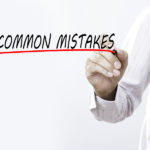Protecting Money from a Child’s Divorce
Families with concerns about a child’s marriage are often interested in protecting money from a child’s divorce. This often arises in situations where a parent wishes to give away assets to her children and grandchildren. Giving assets directly to a child with an unstable marriage can put those assets in jeopardy, and this problem can be solved with the use of estate planning strategies, according to the article “Husband should keep inheritance in separate account” from The Reporter.
Everything a spouse earns while married is considered community property or marital property in most states. However, a gift or inheritance is usually considered separate property or separate from the marriage, which is articulated differently depending on what state you are in. If the gift or inheritance is not kept totally separate, that protection can be easily lost.
An inheritance or gift should not only be kept in a separate account from the spouse, but it might be a good idea to keep it at an entirely different financial institution. Since accounts within financial institutions are usually accessed online, it would be very easy for a spouse to gain access to an account, since they have likely already arranged for access to all accounts.
No other assets should be placed into this separate account, or the separation of the account will be lost and some or all of the inheritance or gift will be considered belonging to both spouses. There may be other considerations about the income generated by that money, but check with your local estate planning attorney on that issue.
The problem comes when the money from the gift or inheritance is mixed or commingled with the other assets of the marriage. Depending on what the assets are, they might be able to be untangled. More likely, the mixing will “poison the well” and make all of it subject to the divorce. Here is another issue: if the child does not believe that the spouse is a problem or if the child is being pressured by the spouse to put the money into a joint account, they may need some help from a family member to ensure protecting the money from the child’s divorce.
This “help” comes in the form of the parent putting the gift or inheritance in an irrevocable trust. Everyone concerned with protecting money from a child’s divorce should consider one.
This trust will keep the money separate and will be administered under its terms. The trust can benefit the child, but will keep the money owned by the trust from being commingled and therefore, separate property. That way, if they divorce later, the money in the trust is protected. Many clients love this option and include it as part of their estate plan, especially as trusts of this type have similar benefits with the child’s creditors.
The best solution is for the parent to meet with an estate planning attorney who can work with her on protecting the money from the child’s divorce.
People often attempt to find simple workarounds to complex estate planning issues, and these DIY solutions usually backfire. It is smarter to speak with an experienced attorney, who can help both parent and child in protecting the money from a child’s divorce.
Reference: The Reporter (Dec. 20, 2020) “Husband should keep inheritance in separate account”

